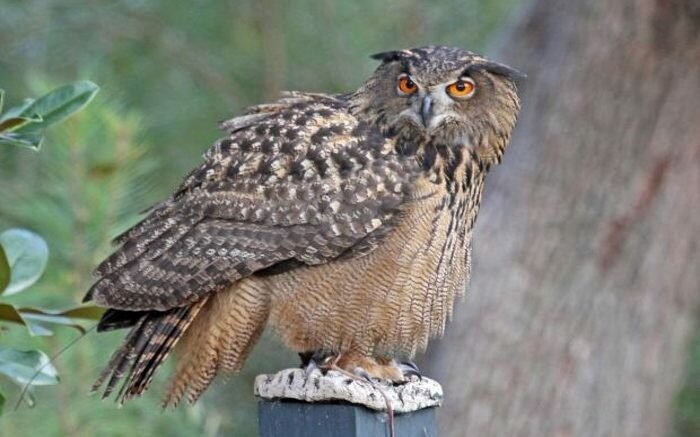Observation of Eagle-owl may thwart wind power development
Observations of Eurasian Eagle-owl (Bubo bubo, Hubro) leads to that the Norwegian Society for Nature Conservation (Naturvernforbundet) demands a halt to the planned wind power development on the Sørmarkfjellet Mountain in Flatanger and Osen municipalities in Trøndelag.
In the license requirements for the wind power plant, the Ministry of Petroleum and Energy points out that no Eagle-owl has been found in the area, but this is now refuted, the Norwegian Society for Nature Conservation underlines.
“The Eagle-owl is a severely threatened species. It has lost large habitats due to interventions and developments. We consider it likely that all wind power developments at Fosen have removed Eagle-owl habitats. If Sørmarkfjellet can be left as an enclave, that will be important because of lost habitats elsewhere on Fosen and along the coast of Trøndelag. If one also discovers breeding in the area, there will be strong documentation of the area’s importance for the Eagle-owl,” Head of the Norwegian Society for Nature Conservation, Silje Ask Lundberg, states.
Presence of Eagle-owl has been proven in the concession area where Trønderenergi is engaged in foresting and blasting, according to Lundberg. Nord University’s report from the area shows that all the listening boxes in the area have registered mating calls of the species.
The Norwegian Society for Nature Conservation now sends a letter to the Norwegian Water Resources and Energy Directorate (NVE) with a demand for the work to stop immediately pending further investigations commissioned by the developer.
Eurasian Eagle-owl
The Eurasian Eagle-owl (Bubo bubo) is a species of owl that resides in much of Eurasia. It is also called the European Eagle-owl and in Europe, it is occasionally abbreviated to just Eagle-owl (Norwegian: Hubro). It is one of the largest species of owl, and females can grow to a total length of 75 cm (30 in), with a wingspan of 188 cm (6 ft 2 in), males being slightly smaller.
This bird has distinctive ear tufts, with upper parts that are mottled with darker blackish colouring and tawny. The wings and tail are barred. The underparts are a variably hued buff, streaked with a darker colour. The facial disc is poorly developed and the orange eyes are distinctive.
© #Norway Today











